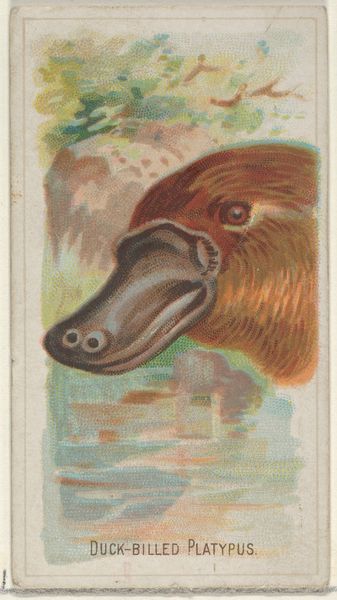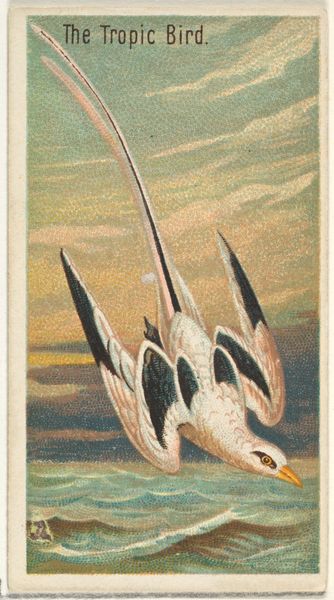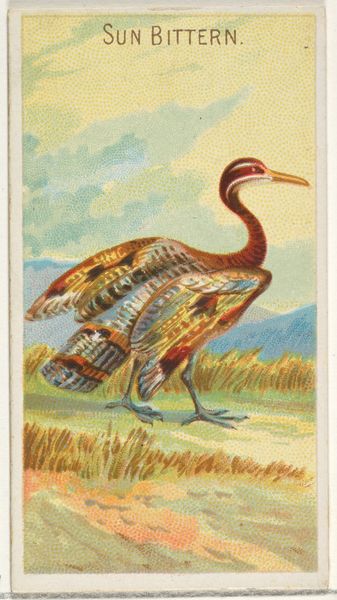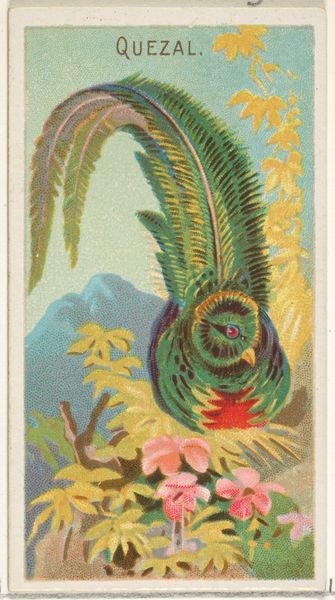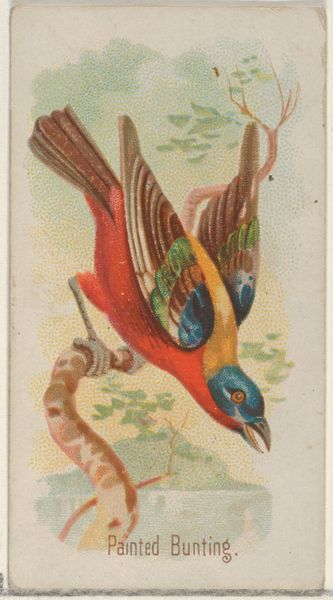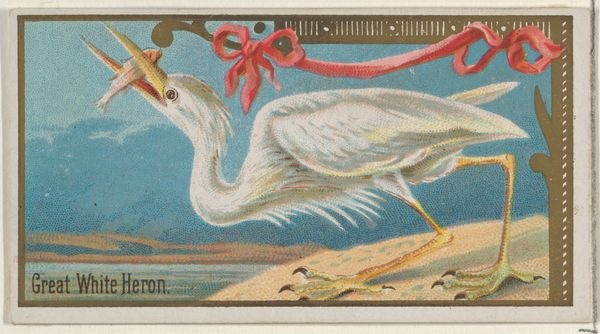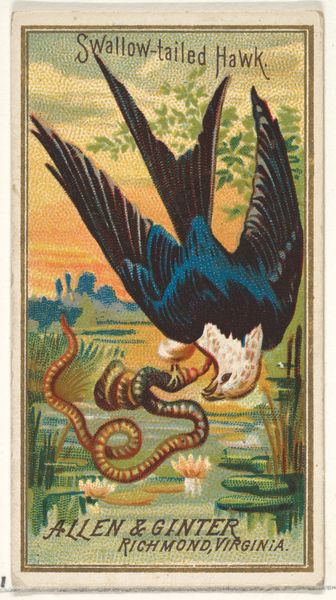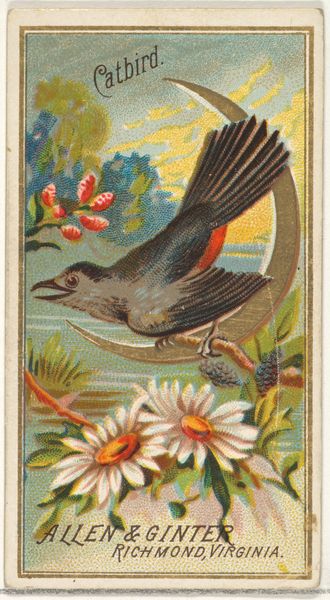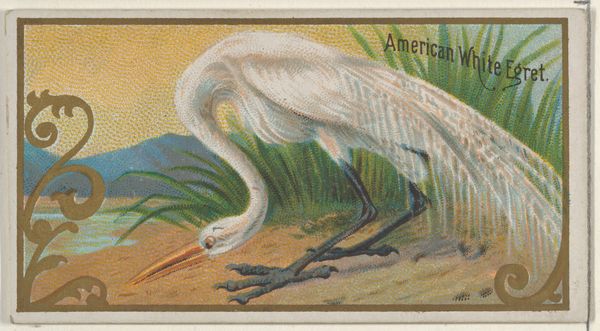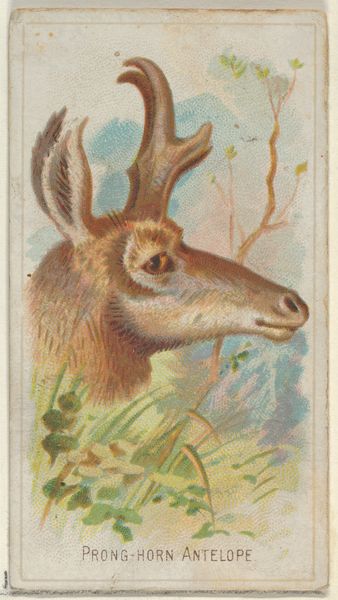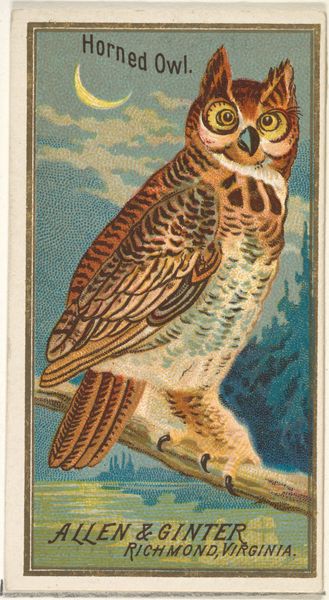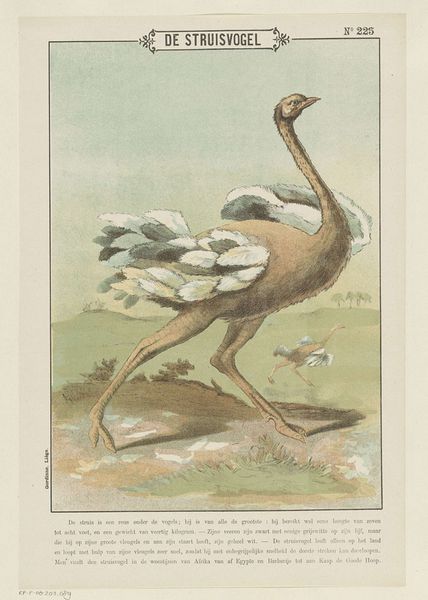
Anteater, from the Wild Animals of the World series (N25) for Allen & Ginter Cigarettes 1888
0:00
0:00
drawing, print
#
drawing
#
toned paper
#
water colours
#
animal
# print
#
possibly oil pastel
#
handmade artwork painting
#
coloured pencil
#
coffee painting
#
watercolour bleed
#
watercolour illustration
#
botanical art
#
watercolor
Dimensions: Sheet: 2 3/4 x 1 1/2 in. (7 x 3.8 cm)
Copyright: Public Domain
Curator: Here we have a curious image, an anteater from the “Wild Animals of the World” series (N25), created in 1888 by Allen & Ginter. It is a print utilizing watercolors, possibly also oil pastels and colored pencil. Editor: My immediate impression is that the colours are strangely muted, creating a hazy, almost dreamlike quality, although the shapes of the animals themselves are fairly sharply rendered. There’s also a repetitive use of dotted texture over the entire artwork. Curator: Indeed. This was part of a series of collectible cards included in cigarette packs. This particular card tells us a great deal about the cultural context of the late 19th century. The portrayal of 'wild' animals as exotic objects reflects a specific imperial gaze, where the natural world is seen as something to be collected, catalogued, and consumed, much like the tobacco itself. Editor: The formal composition also seems relevant here. The focus is squarely on the anteater, depicted in profile, dominating the space with its unusual morphology and peculiar details like the tongue extending downwards. It’s undeniably exoticized through visual emphasis. Curator: Absolutely. Notice how the anteater isn't situated within a detailed, realistic ecosystem, but rather a vaguely indicated, idyllic scene, with touches of soft botanical illustrations. This isn't about scientific accuracy, but rather reinforcing ideas about a far-off, easily consumable 'wild.' The soft focus serves to sanitize it. Editor: It almost anticipates some modern advertisements. The limited palette reinforces that impression, unifying the image tonally, perhaps intentionally blurring the boundaries between reality and constructed exoticism. Curator: The very act of putting it on a card for cigarettes equates this 'wild animal' with pleasure and consumption. Consider the historical context: anxieties surrounding industrialization and urbanization may have fuelled a nostalgia for the ‘natural’ world and these anxieties were channeled in the culture of collecting. Editor: This work’s material qualities seem at odds with the animal, rendering a coarse fur into delicate washes and lines, which is interesting. There’s this immediate discord between the textures within the artwork that invite a kind of semiotic disruption, questioning traditional associations with form and value. Curator: Precisely. Its creation and circulation contributed to the wider dissemination of ideas about race, class, and colonialism. By examining these seemingly innocent images, we gain crucial insights into how dominant ideologies were, and continue to be, subtly encoded and perpetuated. Editor: It really does challenge one's gaze. I was so taken with its colours before and now I'm noticing new things.
Comments
No comments
Be the first to comment and join the conversation on the ultimate creative platform.
